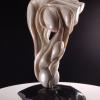Lightmeter vs. R9 (different readings my confusion)
-
Recently Browsing 0 members
- No registered users viewing this page.
-
Similar Content
-
Lightmeter for M6 TTL 1 2 3 4
By Telemetric,
- 63 replies
- 8,380 views
-
Difficult read
By Orson,
- 1 reply
- 267 views
-
- 2 replies
- 416 views
-
- 3 replies
- 293 views
-
- 30 replies
- 1,719 views
-



Recommended Posts
Join the conversation
You can post now and register later. If you have an account, sign in now to post with your account.
Note: Your post will require moderator approval before it will be visible.